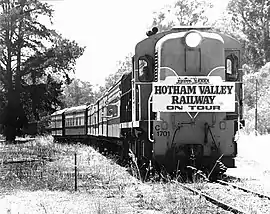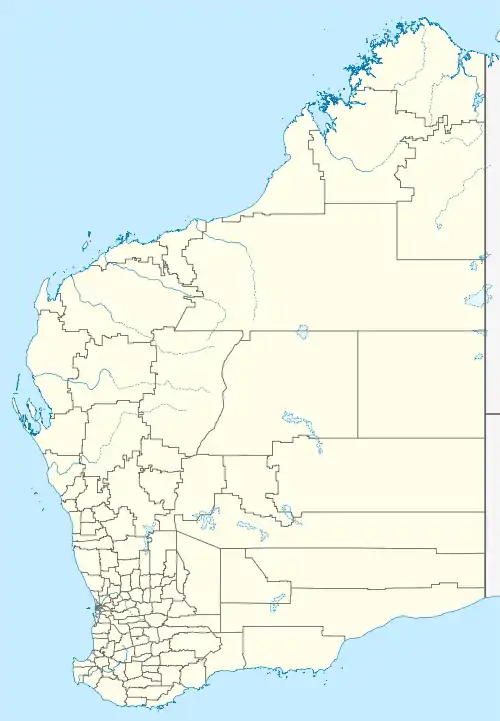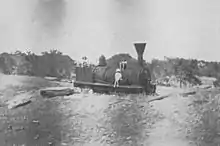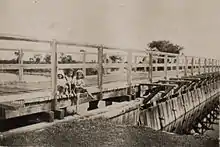Wonnerup, Western Australia
The townsite of Wonnerup is located 219 kilometres (136 mi) south of Perth and 10 kilometres (6 mi) east of Busselton. It was gazetted a townsite in 1856,[3] deriving its name from the nearby Wonnerup Inlet.
| Wonnerup Western Australia | |
|---|---|
 The last passenger train to Busselton passes through Wonnerup, January 1987. | |
 Wonnerup | |
| Coordinates | 33.62°S 115.4°E |
| Population | 145 (2016 census)[1] |
| Established | 1856 |
| Postcode(s) | 6280 |
| Elevation | 94 m (308 ft) |
| Location | |
| LGA(s) | City of Busselton |
| State electorate(s) | Vasse |
| Federal Division(s) | Forrest[2] |
The name is Aboriginal, and has been shown on maps of the region since 1839. The meaning of the name is "place of the woman's digging or fighting stick"; the Noongar word for fighting stick is wonna, while the suffix -up denotes place of. The wonna was made from the peppermint tree, Agonis flexuosa, a coastal native found only in the south-west, and was a common trade item of the Noongar people.[4]
The Wonnerup massacre of Wardandi Noongar people by European settlers occurred in the vicinity of the area in 1841. The Ballaarat Tramline, Western Australia's first railway and railway bridge, was constructed in 1871 in the locality of Lockville, within Wonnerup. Wonnerup was later the junction of the Bunbury to Busselton railway line and the Nannup Branch Railway.


See also
References
- Australian Bureau of Statistics (27 June 2017). "Wonnerup (State Suburb)". 2016 Census QuickStats. Retrieved 12 October 2019.

- "Australian Electoral Commission". AEC localities. Retrieved 26 February 2015.
- Western Australian Land Information Authority. "History of country town names – W". Retrieved 8 June 2007.
- "Water Authority - Aboriginal social water requirements for the Southern Blackwood Plateau" (PDF). 2006. Retrieved 14 September 2008.